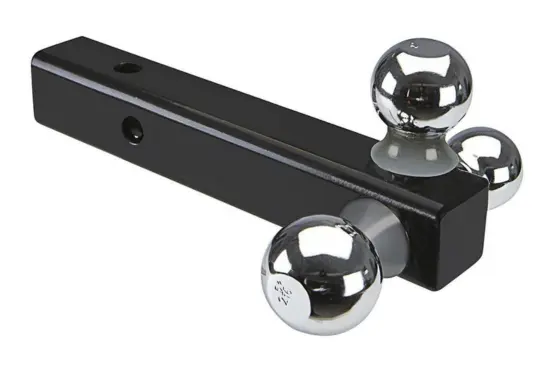Setting out on a towing adventure may seem overwhelming, but worry not! The correct trailer ball size ensures a seamless journey. Transitioning smoothly into our discussion, let’s explore the fundamentals. We’ll delve into the tradeoffs of various factors and navigate the challenges of different approaches. Understanding the significance of decisions regarding the Trailer Ball Size Chart is paramount for safe and efficient towing.
Trailer Ball Size Chart
| Ball Diameter | Shank Length | Weight Capacity |
|---|---|---|
| 1-7/8″ | 1-5/8″ to 3″ | 2,000 to 3,500 lbs. GTW |
| 2″ | 1-3/4″ to 3″ | 3,500 to 12,000 lbs. GTW |
| 2-5/16″ | 2-1/8″ to 3-1/2″ | 6,000 to 30,000 lbs. GTW |
| 3″ | 3-1/4″ | 30,000 lbs. GTW |
Understanding Trailer Ball Sizes
Before connecting your trailer, understanding trailer ball sizes is essential. Let’s break down the fundamentals. Transitioning smoothly into our discussion, we’ll explore what trailer ball size entails and why matching it to the coupler size is vital. Delving deeper, we’ll uncover the tradeoffs and challenges involved, emphasizing the critical impact of decisions on the Trailer Ball Size Chart.

Common Trailer Ball Sizes
Trailer balls vary in size and application. Transitioning from understanding the basics, let’s delve into the specifics. We’ll explore the common sizes like the 1 7/8-inch, 2-inch, and 2 5/16-inch trailer balls, along with their typical uses.
Additionally, we’ll touch upon less common sizes, discussing their relevance and potential tradeoffs. Understanding these variations is crucial for informed decisions on the Trailer Ball Size Chart.
Choosing the Right Trailer Ball Size
Choosing the right trailer ball size is pivotal for safe towing. Let’s transition into the decision-making process. Firstly, we’ll discuss measuring your coupler size accurately. Next, we’ll explore the significance of trailer weight and tongue weight considerations.
Finally, we’ll emphasize the importance of consulting manufacturer guidelines to ensure optimal compatibility. Balancing these factors is crucial for informed decisions on the Trailer Ball Size Chart.
Compatibility and Safety Tips
Transitioning from choosing the right trailer ball size, let’s prioritize safety. Safety is paramount in towing endeavors. Here, we’ll outline essential tips to ensure compatibility and safe towing practices. Firstly, we’ll discuss the importance of checking ball and coupler ratings diligently. Then, we’ll highlight the significance of proper installation techniques and torque application.
Finally, we’ll emphasize the necessity of regular maintenance and inspection routines. Balancing these factors is critical for maximizing safety while utilizing the Trailer Ball Size Chart effectively.
Troubleshooting Common Issues
Transitioning from ensuring safety, let’s address common challenges encountered during towing. If you’re facing issues, fret not! We’ll troubleshoot some common problems related to trailer ball sizes. Firstly, we’ll tackle trailer swerving or swaying, exploring potential causes and solutions. Then, we’ll address uneven weight distribution and its impact on towing stability.
Finally, we’ll discuss coupler jamming or misalignment and strategies to resolve these issues effectively. Understanding these challenges is crucial for maintaining optimal performance with the Trailer Ball Size Chart.
Conclusion
In conclusion, equipped with a deep understanding of trailer ball sizes, you’re poised to embark on towing adventures confidently. Transitioning from troubleshooting challenges, remember that safe travels await. Consider the tradeoffs and challenges discussed, ensuring informed decisions when utilizing the Trailer Ball Size Chart. With safety at the forefront, may your journeys be smooth and trouble-free.
FAQs
FAQ: Can I use a different size ball than my coupler?
Answer: It’s not recommended. Matching the trailer ball size to the coupler size ensures proper towing alignment and safety. Using a different size could lead to instability and potential accidents.
FAQ: What if my trailer weight falls between standard ball sizes?
Answer: In such cases, it’s best to opt for the larger size ball. Choosing a smaller ball could compromise towing stability and safety. However, if feasible, consider redistributing weight to align with standard ball sizes.
FAQ: Are there adapters available for different ball sizes?
Answer: Yes, adapters are available to accommodate varying ball and coupler sizes. However, it’s essential to use them judiciously. Adapters may introduce additional points of failure and should only be used when necessary, with proper consideration for towing safety.